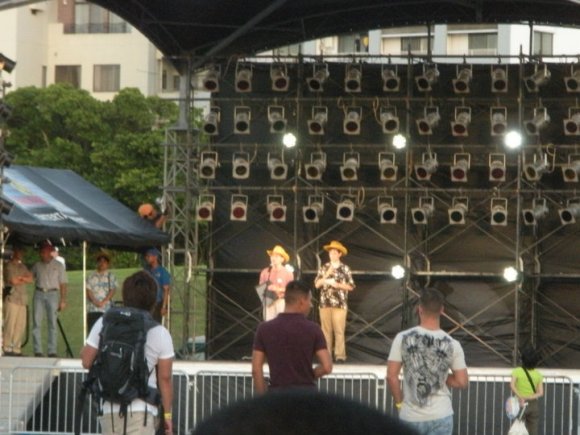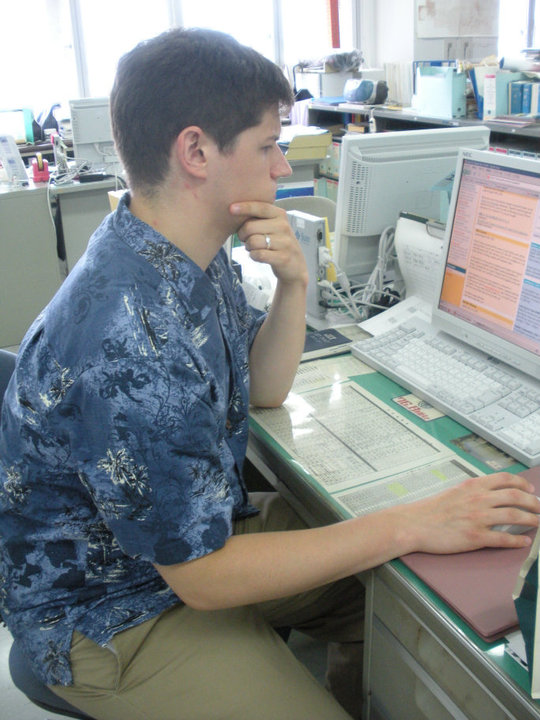
Working for JET was awesome for me, and now it can be your turn!
After I graduated from college, I worked for two years in Japan as a CIR through the JET Program, and it was – no exaggeration – the best experience of my life.
I’m not someone to say that lightly either. To be perfectly honest, I’m really not a fan of traveling or immersing myself in other cultures; I’m perfectly fine “traveling” via watching YouTube videos, all the while eating microwave pizzas.
▼ Accurate.
But the JET Program was different. It gave me something no YouTube video or week-long vacation to a foreign country could possibly give me: the opportunity to live and work in Japan at an actual Japanese organization with actual Japanese people.
For those unaware, the JET Program directly employs people in two different positions: ALTs (Assistant Language Teachers) and CIRs (Coordinator for International Relations).
ALTs are typically native English speakers (occasionally other languages) who assist the English teachers in Japanese public schools by acting as a native language resource. They help with pronunciation, run dialogues, perform skits, play games – anything to help get the Japanese kids excited about learning English. No Japanese language ability is required to be an ALT.
▼ The typical ALT, explaining the very important
English idea of “cat” to Japanese students.
CIRs are also typically native English speakers (occasionally other languages as well) who work in Japanese government organizations, such as a city hall, an international organization, or elsewhere. They interpret and translate between Japanese and English, plan and carry out international exchange events, receive guests from abroad, and more. There’s no official level of Japanese necessary to be a CIR, but around the JLPT 1 or 2 level would be best.
▼ The typical CIR, explaining Japanese robot ninja samurai to foreign guests.
When I was a CIR, I worked at a city hall in Okinawa, where I was the only English-speaker in a nine-story behemoth of a building with hundreds of employees. I was responsible for not only the translation of all documents within city hall (marriage licenses, tax pamphlets, etc.), but also interpreting for international guests from all over the world, interpreting for the mayor when he visited U.S. bases, as well as acting like a fool in front of kindergarteners and elementary schoolers to make them laugh and hopefully not think all Americans are monsters.
▼ My wife and I running a Halloween party event for local kids.
I am dressed as the very spooky Chopper.
▼ Me interpreting the vice-mayor’s speech on a stage in front
of thousands at an annual festival on a nearby U.S. base.
But the best part of being a CIR in the JET Program was actually having a legitimate job in Japan with Japanese coworkers. I got to experience life in Japan firsthand, not a zoo-like experience which a lot of study abroad or other teaching/working programs can end up as. I lived in a real Japanese apartment, spoke Japanese at work every day, and hung out with my coworkers after hours and on the weekends for fun.
▼ I even wore official Okinawan work attire: Hawaiian shirts known as
kariyushi. They’re worn from May to October, but I rocked it year round.
▼ I also achieved my lifelong dream of appearing
in the newspaper… for a respectable reason.
Even though I didn’t work as an ALT myself, my wife did work as an ALT employed through the board of education while we lived in Okinawa, and it was such a great experience for her that we recently moved back to Japan so she could continue her dream job of teaching English.
When I worked as a Japanese tutor in the U.S., I had a lot of college students who wanted to go to Japan after graduation. I recommended the JET Program to each of them as the absolute best way to experience the real Japan.
Not only do you get an awesome job (that pays pretty well), but JET helps you every step of the way: they put you in contact with your predecessor months before you leave so you can get the low-down on your new home, have a training session before you leave, have another training session after you arrive, and make sure that you are comfortable and settled in your apartment with everything you need.
▼ And if you’re lucky like me, you get the amazing experience of having
your sink, shower, and toilet all share the same floor.
If you’re interested in applying for JET, then watch this video below, which the organization recently released. You can hear the stories from many different JETs and see if it’s something you’d like to do:
Personally, I learned more during my two years in JET than four years at college. Before JET, my only experiences in Japan were a zoo-like study abroad, and a confusing internship in Tokyo. JET finally gave me the realistic experience of living and working in Japan that I’d always wanted, and it can do the same for you.
If JET sounds like something you’d like to try, then head on over to their application page. The official application doesn’t start until next month, but even as someone who loves JET, I have to admit that their application process is long and stressful. There’s no better time than now to start asking for those letters of recommendation!
Best of luck to new applicants, and if you were a JET yourself, what was your experience like? Let us know in the comments so we give any future JETs the best support we can!
Source/featured/top image: Facebook/Official JET Program USA
Insert images: ©RocketNews24








 Nihon-no: Is an entirely English-speaking village coming to Tokyo?
Nihon-no: Is an entirely English-speaking village coming to Tokyo? What better way to fly to Japan than on the brand-new Pikachu Jet?
What better way to fly to Japan than on the brand-new Pikachu Jet? Oddly satisfying: commercial shows Japanese professionals working magic at their jobs【Video】
Oddly satisfying: commercial shows Japanese professionals working magic at their jobs【Video】 ALT in Japan asked to remove earrings by Board of Education
ALT in Japan asked to remove earrings by Board of Education Why was Malaysia Airlines flight MH17 flying over Ukraine? NHK explains
Why was Malaysia Airlines flight MH17 flying over Ukraine? NHK explains McDonald’s new Happy Meals offer up cute and practical Sanrio lifestyle goods
McDonald’s new Happy Meals offer up cute and practical Sanrio lifestyle goods All-you-can-drink Starbucks and amazing views part of Tokyo’s new 170 meter-high sky lounge
All-you-can-drink Starbucks and amazing views part of Tokyo’s new 170 meter-high sky lounge Studio Ghibli glasses cases let anime characters keep an eye on your spectacles
Studio Ghibli glasses cases let anime characters keep an eye on your spectacles Super Nintendo World expansion gets delayed for several months at Universal Studios Japan
Super Nintendo World expansion gets delayed for several months at Universal Studios Japan Kyoto’s 100 Demons yokai monster parade returns!
Kyoto’s 100 Demons yokai monster parade returns! Beautiful Sailor Moon manhole cover coasters being given out for free by Tokyo tourist center
Beautiful Sailor Moon manhole cover coasters being given out for free by Tokyo tourist center Osaka’s creepy cute mascot speaks for first time, adds more fuel the creepy OR cute debate【Video】
Osaka’s creepy cute mascot speaks for first time, adds more fuel the creepy OR cute debate【Video】 More foreign tourists than ever before in history visited Japan last month
More foreign tourists than ever before in history visited Japan last month A visit to the best UFO catcher arcade in the universe!
A visit to the best UFO catcher arcade in the universe! Japanese revolving sushi restaurant creates solo-diner capsules for a private world of sushi
Japanese revolving sushi restaurant creates solo-diner capsules for a private world of sushi Disney princesses get official manga makeovers for Manga Princess Cafe opening in Tokyo
Disney princesses get official manga makeovers for Manga Princess Cafe opening in Tokyo Starbucks reopens at Shibuya Scramble Crossing with new look and design concept
Starbucks reopens at Shibuya Scramble Crossing with new look and design concept Beautiful new Final Fantasy T-shirt collection on the way from Uniqlo【Photos】
Beautiful new Final Fantasy T-shirt collection on the way from Uniqlo【Photos】 Is the new Shinkansen Train Desk ticket worth it?
Is the new Shinkansen Train Desk ticket worth it? Foreign English teachers in Japan pick their favorite Japanese-language phrases【Survey】
Foreign English teachers in Japan pick their favorite Japanese-language phrases【Survey】 Japanese convenience store packs a whole bento into an onigiri rice ball
Japanese convenience store packs a whole bento into an onigiri rice ball We try out “Chan Ramen”, an underground type of ramen popular in the ramen community
We try out “Chan Ramen”, an underground type of ramen popular in the ramen community Studio Ghibli releases Kiki’s Delivery Service chocolate cake pouches in Japan
Studio Ghibli releases Kiki’s Delivery Service chocolate cake pouches in Japan Japan’s bone-breaking and record-breaking roller coaster is permanently shutting down
Japan’s bone-breaking and record-breaking roller coaster is permanently shutting down New definition of “Japanese whiskey” goes into effect to prevent fakes from fooling overseas buyers
New definition of “Japanese whiskey” goes into effect to prevent fakes from fooling overseas buyers Our Japanese reporter visits Costco in the U.S., finds super American and very Japanese things
Our Japanese reporter visits Costco in the U.S., finds super American and very Japanese things Studio Ghibli unveils Mother’s Day gift set that captures the love in My Neighbour Totoro
Studio Ghibli unveils Mother’s Day gift set that captures the love in My Neighbour Totoro Foreign passenger shoves conductor on one of the last full runs for Japan’s Thunderbird train
Foreign passenger shoves conductor on one of the last full runs for Japan’s Thunderbird train Domino’s Japan now sells…pizza ears?
Domino’s Japan now sells…pizza ears? New Japanese KitKat flavour stars Sanrio characters, including Hello Kitty
New Japanese KitKat flavour stars Sanrio characters, including Hello Kitty Kyoto creates new for-tourist buses to address overtourism with higher prices, faster rides
Kyoto creates new for-tourist buses to address overtourism with higher prices, faster rides Sales of Japan’s most convenient train ticket/shopping payment cards suspended indefinitely
Sales of Japan’s most convenient train ticket/shopping payment cards suspended indefinitely Sold-out Studio Ghibli desktop humidifiers are back so Totoro can help you through the dry season
Sold-out Studio Ghibli desktop humidifiers are back so Totoro can help you through the dry season Japanese government to make first change to romanization spelling rules since the 1950s
Japanese government to make first change to romanization spelling rules since the 1950s Ghibli founders Toshio Suzuki and Hayao Miyazaki contribute to Japanese whisky Totoro label design
Ghibli founders Toshio Suzuki and Hayao Miyazaki contribute to Japanese whisky Totoro label design Doraemon found buried at sea as scene from 1993 anime becomes real life【Photos】
Doraemon found buried at sea as scene from 1993 anime becomes real life【Photos】 Tokyo’s most famous Starbucks is closed
Tokyo’s most famous Starbucks is closed One Piece characters’ nationalities revealed, but fans have mixed opinions
One Piece characters’ nationalities revealed, but fans have mixed opinions We asked a Uniqlo employee what four things we should buy and their suggestions didn’t disappoint
We asked a Uniqlo employee what four things we should buy and their suggestions didn’t disappoint Princesses, fruits, and blacksmiths: Study reveals the 30 most unusual family names in Japan
Princesses, fruits, and blacksmiths: Study reveals the 30 most unusual family names in Japan Japanese Americans tell STORIES FROM TOHOKU
Japanese Americans tell STORIES FROM TOHOKU R2-D2 jet takes to the skies in the most dramatic airline commercial we’ve seen all year
R2-D2 jet takes to the skies in the most dramatic airline commercial we’ve seen all year Pikachu learns how to fly as Japan’s new Pokémon airliner takes fight
Pikachu learns how to fly as Japan’s new Pokémon airliner takes fight Rice “raised on fighter jet roars” from Ishikawa Prefecture is sure to break the flavor barrier
Rice “raised on fighter jet roars” from Ishikawa Prefecture is sure to break the flavor barrier Imoni-kai: A hidden, delicious cultural gem of northern Japan
Imoni-kai: A hidden, delicious cultural gem of northern Japan Want to study abroad in Japan but short on funds? The Freeman-ASIA program might be able to help!
Want to study abroad in Japan but short on funds? The Freeman-ASIA program might be able to help! What’s the fastest-sounding Japanese word? (Hint: it’s the noise a bullet train makes)
What’s the fastest-sounding Japanese word? (Hint: it’s the noise a bullet train makes) 7 things Japanese people in international marriages wish they’d known before tying the knot
7 things Japanese people in international marriages wish they’d known before tying the knot 11 predictions Japanese people made hundreds of years ago about the future
11 predictions Japanese people made hundreds of years ago about the future Japan’s Twitter users in love Air Self-Defense Force’s aerobatics team Blue Impulse
Japan’s Twitter users in love Air Self-Defense Force’s aerobatics team Blue Impulse What’s wrong with English education in Japan? Pull up a chair…
What’s wrong with English education in Japan? Pull up a chair… Have Japan’s “share houses” become a target for women seeking gaijin baby daddies?
Have Japan’s “share houses” become a target for women seeking gaijin baby daddies? Westerners in Japan – do they really ALL speak English? 【Video】
Westerners in Japan – do they really ALL speak English? 【Video】 Looking for places to visit in Tokyo? Check out this trendy new website, 100 Tokyo!
Looking for places to visit in Tokyo? Check out this trendy new website, 100 Tokyo! NASA’s new leek-like supersonic jet design would be perfect for Hatsune Miku’s personal plane
NASA’s new leek-like supersonic jet design would be perfect for Hatsune Miku’s personal plane Is Japan overworking its teachers? One exhausted educator says, “YES!”
Is Japan overworking its teachers? One exhausted educator says, “YES!”
Leave a Reply